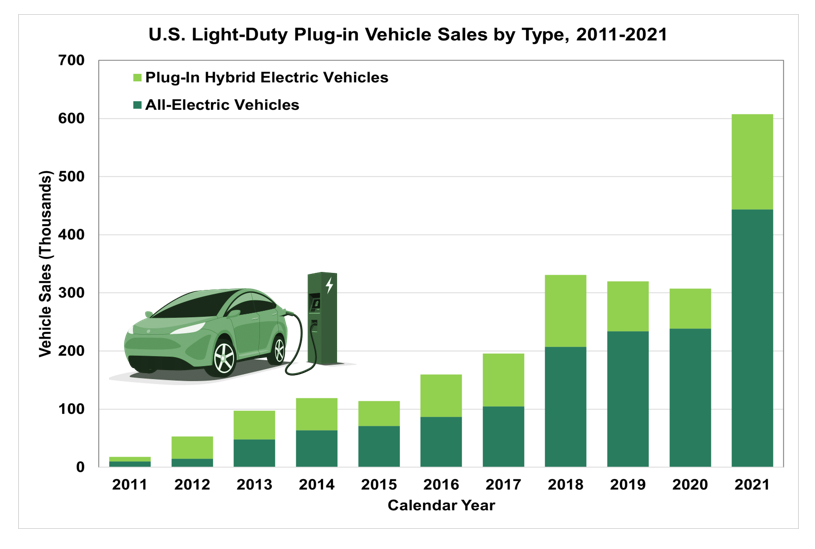
In recent years, the automotive industry has witnessed a profound transformation driven by the rising adoption of electric vehicles (EVs). With a growing global emphasis on sustainability, technological advancements, and supportive government policies, electric vehicles have become a driving force in the automotive landscape. In this article, we delve into the current market share and growth trends of electric vehicles worldwide and explore the crucial role of automotive market data in tracking and understanding this electrifying evolution.
The Global Electric Vehicle Landscape
The global electric vehicle market has experienced remarkable growth, with a notable increase in market share compared to traditional internal combustion engine (ICE) vehicles. While ICE vehicles still dominate the market, EVs have steadily gained ground. Electric cars, plug-in hybrids, and fully electric buses have all contributed to this growth.
One of the key trends in the global EV landscape is the emergence of specific regions and countries as leaders in electric vehicle adoption. Markets in Europe, China, and North America have shown significant promise, with EV market shares outpacing the global average. For instance, Europe has become a hotbed for electric vehicles, with countries like Norway and the Netherlands showing impressive adoption rates due to substantial incentives and robust charging infrastructure.
The Role of Automotive Market Data
Understanding the trends and statistics in electric vehicle adoption wouldn’t be possible without the role of automotive market data. Data sources such as sales figures, charging infrastructure development, consumer preferences, and government policies all play a vital role in painting an accurate picture of the EV landscape.
Automotive market data allows industry stakeholders to track the growth of the EV market, analyze consumer behavior and preferences, and make informed decisions. This data is collected from various sources, including government agencies, automakers, dealerships, and market research firms. It provides valuable insights that enable automakers to tailor their product offerings, governments to formulate effective policies, and consumers to make informed choices.
Trends and Statistics in Electric Vehicle Adoption
The trends and statistics in electric vehicle adoption are nothing short of impressive. Over the past decade, the global market share of EVs has seen exponential growth. Market data shows a consistent increase in sales figures, and projections indicate that the growth is set to continue in the coming years. As technology advances, economies of scale are achieved, and charging infrastructure expands, more consumers are making the switch to electric mobility.
In addition to overall growth, specific EV models and manufacturers have made a significant impact. Tesla, with its innovative and highly popular Model 3, has played a pivotal role in accelerating the adoption of electric vehicles. Other automakers, both traditional and new, have also entered the EV market, offering a diverse range of electric cars to cater to different consumer needs.
Consumer Preferences and EV Features
Automotive market data also sheds light on consumer preferences and the features that drive electric vehicle adoption. Range, charging infrastructure, and battery technology are crucial factors that influence consumer choices. With advancements in battery technology, EVs are offering longer ranges and faster charging times, addressing some of the early concerns about electric vehicle viability.
Data reveals that consumers are becoming increasingly receptive to electric vehicles, and their preferences are evolving. Consumer demographics are also a part of this data. It is clear that the appeal of EVs is spreading beyond early adopters, with a broader spectrum of consumers considering electric cars for their next vehicle purchase.
Government Incentives and Policies
Government incentives and policies have been instrumental in the growth of electric vehicles. Market data shows that regions with robust government support, including tax incentives, rebates, and zero-emission vehicle mandates, have experienced higher EV adoption rates. Case studies of countries with successful policies, such as Norway and its generous incentives, demonstrate the positive impact of government support.
However, the role of data goes beyond identifying the impact of incentives; it also helps policymakers make data-driven decisions to fine-tune their policies and support mechanisms, ensuring they are effective and sustainable.
Challenges and Barriers to Electric Vehicle Adoption
While electric vehicle adoption is on the rise, there are still challenges and barriers to overcome. Range anxiety, concerns about charging infrastructure, and the initial higher cost of EVs are among the hurdles that consumers face. Data on these challenges is crucial for understanding where efforts need to be focused to address these issues effectively.
Furthermore, data on regulatory and infrastructure challenges helps governments and private sector entities work collaboratively to create an environment conducive to electric vehicle adoption. The insights provided by automotive market data enable targeted solutions to alleviate these barriers.
The Future of Electric Vehicles
The future of electric vehicles is promising. Data-driven projections indicate that the electric vehicle market will continue to grow, with further advancements in technology, infrastructure, and consumer acceptance. The ongoing innovation in battery technology and the emergence of new players in the EV space signal a dynamic and competitive future.
The electric vehicle industry is on the cusp of even greater transformations, including potential developments in autonomous electric vehicles and the expansion of EVs into commercial and freight transportation. Data will play a central role in guiding these developments, ensuring they align with market needs and sustainability goals.
Conclusion
In the journey toward a more sustainable and environmentally conscious automotive industry, electric vehicles have emerged as a driving force. Automotive market data plays a pivotal role in tracking and understanding the rise of electric vehicles. It offers valuable insights into market share, growth trends, consumer preferences, and policy impact. As electric mobility continues to evolve, the role of data remains essential in guiding the industry toward a more electrifying and sustainable future.


